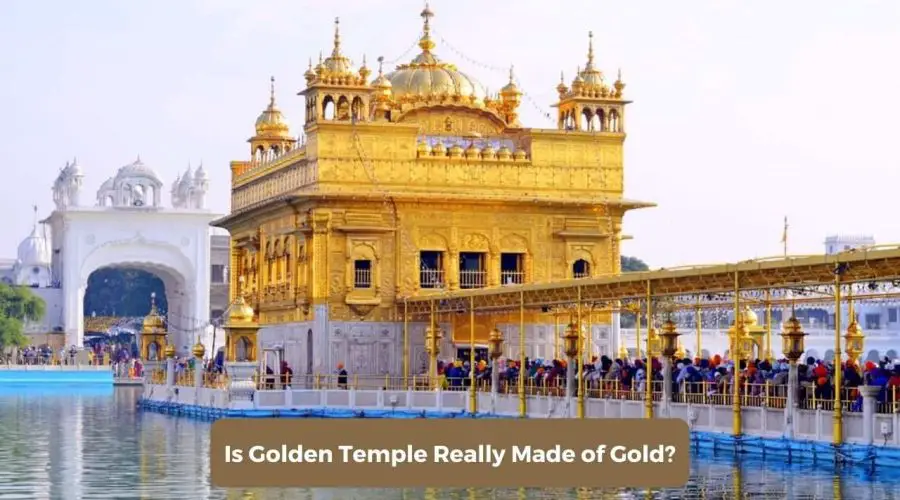Is Golden Temple Really Made of Gold?
One of the most important symbols of unity and Sikhism is the Golden temple.
One of the most asked questions related to the Golden temple is whether the temple is really made of gold? Well, let’s dive in to get the answer:-
The Importance of Golden Temple
“Darbar Sahib“ or “Harmandar Sahib“ are other names for the Golden Temple. Located in the heart of Amritsar, Punjab, it is one of the oldest Sikh prayer locations. The magnificent Golden Temple is a minor portion of the massive Harmandir Sahib Gurdwara complex, which is known to Sikhs as Harmandir Sahib. The shrine is located on Amrita Saras, a tiny island.
History Behind the Golden temple
Arjan, the fifth Sikh Guru, erected the first Harmandir Sahib in 1604 on a lower level so that everyone had to walk down to enter. The fact that this sacred temple has four doors from all four directions indicates that individuals from all walks of life are welcome. The temple’s charm is that when the meal is delivered, everyone forms a regular line.
The Temple was constructed without any gold plating initially. Maharaja Ranjit Singh reconstructed it in 1830 using only marble and gold after several demolitions. The Golden Temple has a stunning mix of architectural elements, with a marble and copper bottom floor.
The second level, on the other hand, is much more beautiful, with Gold Panels on both sides. Furthermore, the temple was constructed using almost 750 kg of gold. The gold is pure, and it sends forth a message of humility and purity to the whole world.
Sikhs’ Holiest Site
Sikhs revere the Golden Temple as a sacred site. People from all walks of life, regardless of caste, creed, or religion, come to the temple to seek spiritual direction and pray for their well-being. Every day, more than 100,000 individuals visit the temple. On a daily basis, it is one of India’s most popular destinations.
Sikhs call this location “Khalis,” which means “purity.” Every Sikh should go here at least once in their lives. ‘Amrit Sarovar,‘ which means ‘Pool of Holy Nectar,’ is the name of the constructed lake that surrounds the temple. Inside the shrine, the Guru Granth Sahib is a symbol of the Khalsa brotherhood.
Sikhs believe that meditating on the Guru’s name is one method to attain liberation. As a result, you’ll often hear individuals shouting praises to the Guru. Furthermore, if you go around the lake, you will see numerous Sikhs bathing in the lake. They feel it is the most effective means of atonement and forgiveness.
The Golden Temple has several interesting facts.
• During exceptional religious ceremonies, the Golden Temple’s Langar can accommodate up to 200,000 people.
• The temple’s whole top is made of pure gold, adding to the temple’s grandeur.
• It’s fairly common to see people bathing in the lake inside the golden temple complex since they think the water has medicinal powers and can cleanse one’s karma.
• Non-Sikhs account for 35% of visitors to the Temple.
• Harmandir Sahib has doors on all four sides to represent that people of all religions, ages, and races are welcome to enter the shrine.
• The Golden Temple is one of the most important Mughal and Indian architectural emblems.
• The ‘Amrit Sarovar,’ or ‘Pool of Holy Nectar,’ is a man-made lake that surrounds the temple.

